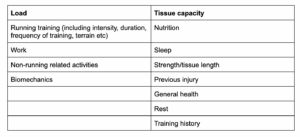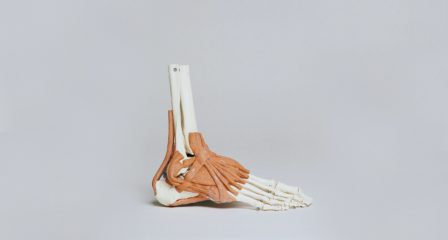Written by Physiotherapist, Lachie Cooper.
Running related injuries are some of the more common presentations we see at The Injury Clinic.
Although running related injuries are varied and may affect a variety of different tissues in the body, there are often common risk factors and management principles that we may apply.
In this blog, we’ll discuss some factors which contribute to the onset of running-related injuries, common mistakes that people make when managing these injuries, and practical steps that you can take to keep you running for longer!
Why do running related injuries occur?
Ultimately, running related injuries are mostly atraumatic in nature and occur without an obvious moment of injury. This can generally be attributable to the cumulative load placed through a particular tissue exceeding that tissue’s capacity and ability to recover.
There are many different factors which will affect how much load is placed through a tissue and what its capacity is. Some of these factors have been summarised below:

As such, if you develop a running related injury or niggle, it is important to understand that there may be multiple contributing factors which should be explored to mitigate risk of re-injury.
What are the common mistakes we see?
- Runners continue to train with niggles / injuries for far longer than they should.
We commonly find runners wish to persist with their training whilst injured, often with the justification that modifying or reducing their training will negatively impact their performance. There are a range of potential issues that arise from this tactic.
Firstly, the presence of pain may negatively effect strength, power and performance. If we continue to train through pain and worsen symptoms, we are likely doing so to the detriment of our physical performance.
Secondly, the longer we train through pain, we are likely increasing the likelihood of a condition becoming chronic that it will re-occur at a later stage. Again, this will likely result in poorer performance.
- When managing an injury, periods of complete rest are followed by an immediate or rapid return to pre-injury training volumes.
Appropriately programmed training has a range of positive effects on tissue capacity. If we remove training entirely whilst recovering from injury, the body will decondition and re-injury is likely to occur.
Furthermore, we need to acknowledge that an injury occurred at your previous training loads. If we simply return to the same training load post injury without improving tissue capacity or reducing overall load in other aspects of life, another injury is likely to occur.
- Consideration isn’t often given to the additional stress of life and load outside of running.
Unfortunately, most of us do not have the luxury of complete rest and recovery outside of training. Many of us have work, kids, chores, home renovations and hobbies. The physical and mental impact of these activities will have an influence on our physical performance and capacity to perform.
If you are not getting enough rest, you may need to consider whether that extra running session you cram into your busy week is actually helping or a hindrance.
- Runners change their technique in an attempt to manage running injuries with little justification, or understanding of the effect of the change
The way in which we run will influence which tissues are loaded and how they are loaded. Many runners attempt to change their running technique to manage an injury, often without appreciating the fact they are now increasing the load through other tissues which are unaccustomed to these stresses.
This is not to say that there is no place for running technique changes, however, given the number of factors which influence the development of an injury, running technique changes may not need to occur to successfully manage an injury.



